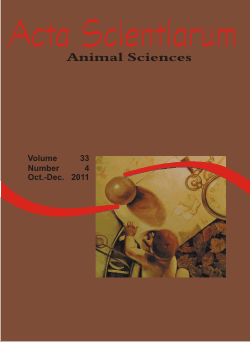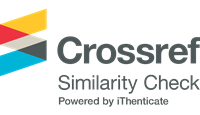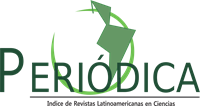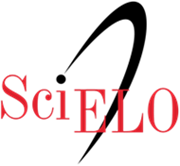<b>Sunflower cake in the ration of dairy cows: microbial production, production, composition and fatty acid profile of milk</b> - doi: 10.4025/actascianimsci.v33i4.11327
Keywords:
co-product, non-protein nitrogen, microbial synthesis
Abstract
The objective of this study was to evaluate the microbial production, production, composition and fatty acids profile of milk from dairy cows fed rations with growing levels of sunflower cake. Eight Girolando cows were used, averaging 515 kg of body weight. The experimental design was a 4 x 4 Latin square, in duplicate, where the factors consisted of the rates of sunflower cake inclusion in the concentrate portion (0, 7, 14 and 21%). A decreasing linear effect was observed for protein and fat production in milk and N urea content. Allantoin rates (mmol day-1) were influenced by the levels of sunflower cake inclusion, with quadratic effect (p < 0.05). Uric acid, total purines, absorbed purines, microbial nitrogen and microbial synthesis were not affected (p > 0.05) by the levels of sunflower cake inclusion. A decreasing linear effect was observed with the levels of sunflower cake inclusion for palmitic acid (C16:0); no statistical differences were observed (p > 0.05) for the other fatty acids. The use of sunflower cake may represent an alternative feed for dairy cows, but does not alter the efficiency of microbial protein synthesis and fatty acids profile of milk.Downloads
Download data is not yet available.
Published
2011-04-28
How to Cite
Pereira, E. S., Pimentel, P. G., Bomfim, M. A. D., Carneiro, M. S. de S., & Cândido, M. J. D. (2011). <b>Sunflower cake in the ration of dairy cows: microbial production, production, composition and fatty acid profile of milk</b> - doi: 10.4025/actascianimsci.v33i4.11327. Acta Scientiarum. Animal Sciences, 33(4), 387-394. https://doi.org/10.4025/actascianimsci.v33i4.11327
Issue
Section
Ruminant Nutrition
DECLARATION OF ORIGINALITY AND COPYRIGHTS
- I Declare that current article is original and has not been submitted for publication, in part or in whole, to any other national or international journal.
The copyrights belong exclusively to the authors. Published content is licensed under Creative Commons Attribution 4.0 (CC BY 4.0) guidelines, which allows sharing (copy and distribution of the material in any medium or format) and adaptation (remix, transform, and build upon the material) for any purpose, even commercially, under the terms of attribution.
Read this link for further information on how to use CC BY 4.0 properly.
0.9
2019CiteScore
29th percentile
Powered by 








































